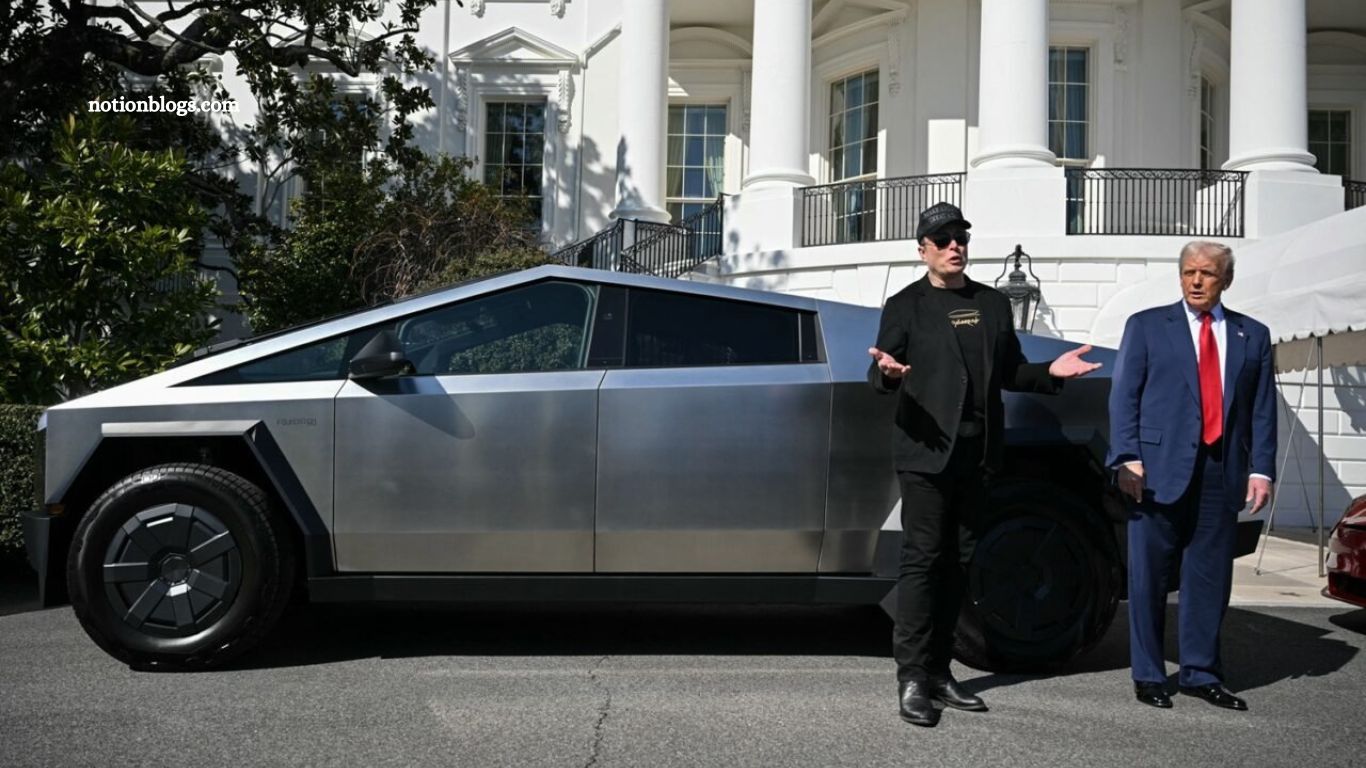Tesla’s Cybertruck, one of the most hyped vehicle launches in recent automotive history, has become widely regarded as a commercial failure. Despite its futuristic design and Elon Musk’s trademark marketing bravado, sales numbers have been underwhelming since its debut. Yet, in a move that has surprised both industry watchers and potential buyers, Tesla is raising prices on its most expensive Cybertruck model.
Rather than cutting costs to attract hesitant customers, the company has doubled down on the idea that exclusivity and luxury add-ons will justify a higher price tag.
Read More: Google’s Pixel Buds 2a Offer a Feature Apple Would Never Put on AirPods
The Cyberbeast: Tesla’s Premium Cybertruck
Earlier this week, Tesla introduced a revamped version of its top-tier Cybertruck, known as the “Cyberbeast.” Originally announced in November 2023 with a price tag of $99,990, the vehicle was positioned as a high-performance variant designed to showcase Tesla’s most advanced engineering.
Tesla’s marketing push was aggressive. The company released a flashy video featuring the Cyberbeast not only towing a Porsche but also racing against one—and winning. The stunt was later accused of being staged, further fueling skepticism about Tesla’s advertising claims.
Now, less than two years later, Tesla has hiked the Cyberbeast’s price by a staggering $15,000, bringing the total cost to $114,990. The justification? A new set of premium features bundled into what the company calls the “Luxe Package.”
What the Luxe Package Includes
According to reports from Reuters, the Luxe Package is designed to sweeten the deal for prospective buyers by adding long-term perks. These include:
- Supervised Full Self-Driving (FSD): Tesla’s controversial semi-autonomous driving system, often criticized for safety concerns and regulatory scrutiny.
- Four Years of Premium Service: Covering tire and windshield protection, maintenance, and other support services.
- Free Supercharging: Unlimited charging at Tesla’s extensive global network of over 70,000 Superchargers.
While these features may sound appealing on paper, critics point out that the majority are software- or service-based, meaning the significant price hike is not directly tied to the physical truck itself. For many, this feels like Tesla charging a luxury tax rather than providing meaningful new value.
A Vehicle for the Wealthy Few
The Cybertruck’s target audience seems increasingly narrow. With a six-figure price tag and an unconventional design often compared to an “armored dumpster,” the truck appeals mostly to wealthy buyers who see it as a novelty or status symbol.
Tesla appears to be banking on the assumption that its affluent customer base will be relatively indifferent to a $15,000 increase. For buyers already spending more than $100,000 on a vehicle, an additional premium may not deter them. In fact, Tesla may believe that higher prices create an aura of exclusivity positioning the Cybertruck less as a mass-market product and more as a luxury toy for the elite.
Sales Performance: From Hype to Reality
When Tesla first unveiled the Cybertruck in 2019, Elon Musk projected enormous demand. Production goals were set at 250,000 units annually, signaling Tesla’s ambition to dominate the electric pickup market.
The reality has been far more sobering:
- In 2024, Tesla sold fewer than 40,000 units a fraction of initial projections.
- In the first quarter of 2025, only 7,100 Cybertrucks were sold, according to estimates from Cox Automotive.
The model has been labeled everything from a “flop” to “the stupidest vehicle ever designed.” Critics argue that while the Cybertruck’s bold design generated early excitement, it has failed to translate into widespread consumer adoption.
Why Is the Cybertruck Struggling?
Several factors explain the Cybertruck’s disappointing performance:
Unconventional Design
The sharp, angular body—constructed with stainless steel—was intended to look futuristic and rugged. Instead, many consumers find it unattractive or impractical for daily use.
Production Challenges
The complexity of manufacturing the stainless-steel exoskeleton has slowed production, leading to delays and limited availability.
Stiff Competition
Rivals like Ford’s F-150 Lightning, Rivian’s R1T, and Chevrolet’s Silverado EV have provided more practical and affordable electric truck alternatives.
Price Point
At over $100,000 for premium models, the Cybertruck is priced far above many competitors, alienating mainstream buyers.
Reputation Damage
High-profile incidents—such as the infamous “unbreakable” windows shattering during the launch event—undermined Tesla’s credibility.
Tesla’s Strategy: Profit Over Volume?
Tesla’s decision to raise Cybertruck prices suggests a shift in strategy. Rather than pushing for mass adoption, the company may now be aiming to maximize revenue per unit.
This “low-volume, high-margin” approach mirrors strategies used in the luxury automotive industry. Instead of competing with Ford or GM on sales numbers, Tesla seems content to market the Cybertruck as an aspirational product—a statement vehicle for wealthy enthusiasts.
However, this comes with risks. If the Cybertruck continues to be perceived as a gimmick, Tesla could further alienate mainstream buyers while relying too heavily on a niche market.
Public Perception and Criticism
Public reception of the Cybertruck has been polarizing. While Tesla fans praise its innovation and unique design, many industry analysts remain skeptical.
- Critics describe it as a vanity project, poorly suited for real-world utility.
- Supporters argue it embodies Tesla’s willingness to take risks and push design boundaries.
Regardless of opinion, the Cybertruck has undeniably succeeded in one area: generating attention. But attention does not always equal sales.
The Future of the Cybertruck
Tesla’s gamble with the Cyberbeast raises questions about the future of the Cybertruck line. Will higher prices and luxury features attract wealthy buyers, or will the strategy backfire and further cement the truck’s reputation as a commercial misstep?
Much will depend on Tesla’s ability to sustain interest and address criticisms. If production bottlenecks ease and the company can deliver vehicles more consistently, sales may stabilize. But without broader appeal, the Cybertruck risks becoming a niche curiosity rather than a mainstream success.
Frequently Asked Questions
Why did Tesla increase the price of the Cyberbeast?
Tesla raised the price of the Cyberbeast by $15,000 to include its new “Luxe Package,” which adds perks like supervised Full Self-Driving, four years of premium service, and free charging at Tesla’s Supercharger network.
How much does the Tesla Cyberbeast cost now?
The updated Cyberbeast is priced at $114,990, up from its original $99,990 price tag in 2023.
What is included in Tesla’s Luxe Package?
The Luxe Package includes supervised Full Self-Driving (FSD), premium service coverage for four years (including tire and windshield protection), and free Supercharging at Tesla’s 70,000+ station network.
How many Cybertrucks has Tesla sold so far?
According to industry estimates, Tesla sold fewer than 40,000 Cybertrucks in 2024 and just 7,100 units in Q1 2025, far below the company’s original target of 250,000 per year.
Why is the Cybertruck struggling to sell?
Analysts point to its unconventional design, high price, production delays, and strong competition from other electric trucks like the Ford F-150 Lightning and Rivian R1T as reasons for weak sales.
Who is buying the Cybertruck?
Most Cybertruck buyers are wealthy Tesla enthusiasts who view it as a novelty or status symbol. For the broader market, the truck’s high cost and polarizing design have been deterrents.
Will Tesla lower Cybertruck prices in the future?
There’s no indication that Tesla plans to lower prices. In fact, the company seems focused on marketing the Cybertruck as a premium, exclusive vehicle rather than a mass-market product.
Conclusion
Tesla’s decision to raise prices on the Cybertruck highlights the company’s confidence or desperation in its product strategy. By targeting wealthy buyers with luxury packages and exclusive perks, Tesla is doubling down on the Cybertruck as a status symbol rather than a practical vehicle.Whether this approach pays off remains to be seen. With weak sales, strong competition, and a polarizing design, the Cybertruck stands at a crossroads. Tesla is betting that its loyal fanbase and the allure of exclusivity will be enough to justify premium pricing.







